Tweaking Home Theater Part 7: PS Audio PerfectWave P5 and P10 AC Regenerators

DarqueKnight
Posts: 6,765
Introduction
A PS Audio P5 AC regenerator (that was under evaluation in my two channel audio system) was briefly evaluated with the plasma television in my home theater system. The immediatly brighter, clearer picture made going back to the Power Plant Premier AC regenerator impossible. However, one P5 could not run my entire movie playback setup (TV, Blu-ray player, preamp and three power amplifiers driving six speakers set to large). I thought (hoped) that one P10 would suffice. It was only adequate for watching TV and for watching movies without high dyanamic contrasts. The HT system in movie watching mode put an average 75% load on the P10. This load increased to over 90% for loud scenes or scenes with high low frequency content. For example, on Star Wars III: Revenge of the Sith Blu-ray, everything was fine until the fight scene with General Grievous at 21 minutes into the movie. The load on the regenerator jumped from 75% to sustained levels greater than 90% for the entire fight sequence. The P10 shut down at the end of this sequence just after the explosive launch of General Grievous' escape pod. The dialog prior the the fight sequence was at an average 72 dB-C. The fight sequence sound effects were at an average 87dB-C. The explosive launch of General Grievous' escape pod was 95 dB-C.
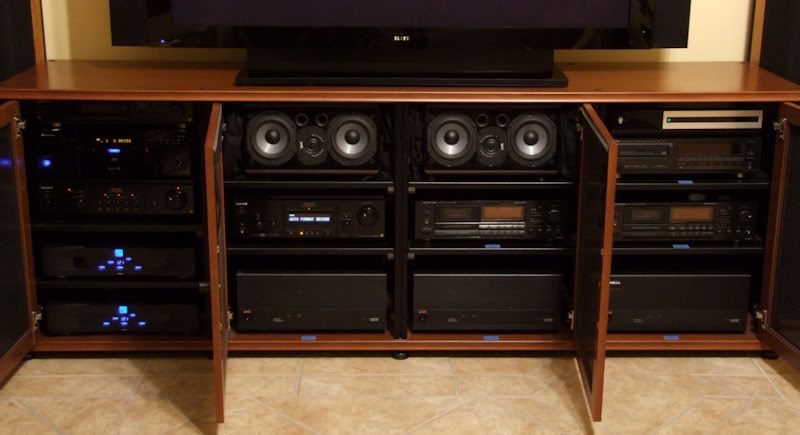
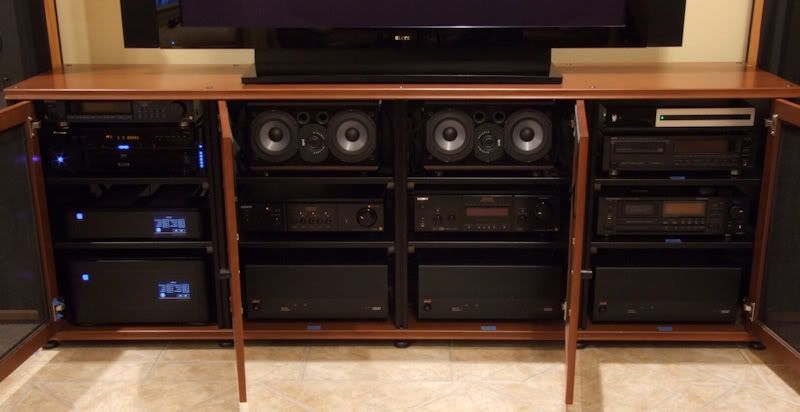
Figure 1. Top: Former home theater equipment configuration with two Power Plant Premier AC
regenerators. Bottom: Current home theater equipment configuration with PerfectWave P5 and P10
AC regenerators.
I had ordered a Cary Audio Cinema 11a surround sound processor to replace the Sony TA-P9000ES multichannel audio preamplifier and Sony TA-E9000ES audio/video preamp/processor. However, after further consideration of the reliability and customer service issues I have had with two Cary Audio products, I canceled the order.

Figure 2. The plasma TV and Tivo DVR are powered by the P5. The Blu-ray player, preamps and power amps for center,
front and surround speakers are powered by the P10. Each regenerator has plenty of headroom for dynamic peaks: In
movie watching mode, the P5 carries a 44% load and the P10 carries a 54% load.
Video Quality Comparisons of the P5
The following screen shots are from a paused image from a Tivo XL High Definition digital video recorder. The program was a CNN high definition (1080i) news broadcast. The native resolution of the Pioneer Kuro high definition plasma is 1080p (1920 x 1080 pixels). The pictures were taken with a Fuji Finepix S9000 9 megapixel digital camera. The camera's image resolution was 3488 x 2616 (9,124,608 pixels). Figures 3, 4, and 5 are reduced-size versions (800 x 669 or 535,200 pixels) of the original screen shots for faster page loading and are 1/17th the size of the original. It is easier to see differences in figures 3-5 and in figures 6-8 if they are downloaded and viewed in succession.
Screen shots were taken with the TV plugged into an ordinary household outlet, with the TV plugged into a Power Plant Premier (PPP) AC regenerator and with the TV plugged into a PerfectWave P5 AC regenerator. In each case, the power cord between the TV and power source was a PS Audio Statement SC. The Power Cord between the AC regenerators and the wall was a PS Audio AC-5. The wall outlet for the AC regenerators was a PS Audio Soloist SE in-wall conditioner, which terminated a dedicated 20 amp AC circuit. The PPP had been in use since 2008. The P5 was new with 100 hours of use.
The image with the PPP was more detailed than that from the wall outlet, but it was also darker, which indicated some current limiting by the PPP. Notice that there was no apparent current limiting with the P5 as the image was equal in brightness to the wall outlet image.

Figure 3. Screen shot of HDTV image with TV plugged into wall outlet.

Figure 4. Screen shot of HDTV image with TV plugged into Power Plant Premier AC regenerator.

Figure 5. Screen shot of HDTV image with TV plugged into PerfectWave P5 AC regenerator.
The cropped images below of the news anchor's left eye provide better insight into picture quality improvements going from the wall outlet to the P5.
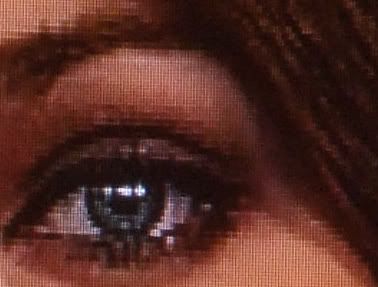
Figure 6. Crop of news anchor's left eye from TV plugged into the wall outlet.
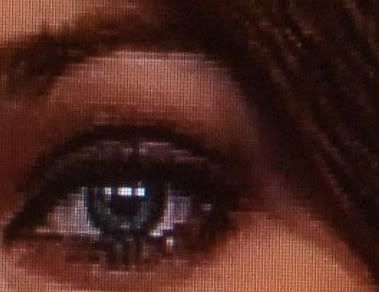
Figure 7. Crop of news anchor's left eye from TV plugged into the Power Plant Premier AC regenerator.
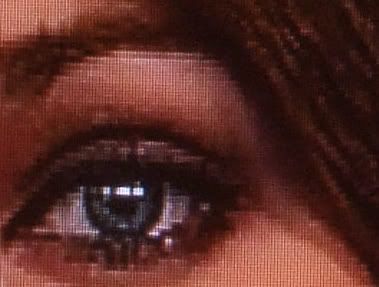
Figure 8. Crop of news anchor's left eye from TV plugged into the PerfectWave P5 AC regenerator.
Comparing the PPP cropped image (figure 7) to the wall outlet cropped image (figure 6), lower power line noise resulted in a smoother picture (less pixelation or "blockiness") and less smearing of pixel information. The three studio light reflections above the news anchor's pupil appear as three blobs of light in the wall outlet cropped image. The studio light reflections in the PPP cropped image are much sharper, more detailed and rectangular than the wall outlet image. There is less pixelation in the eyebrow. The curved edge of the iris is smoother. Notice however, that this increased detail comes at the cost of decreased light output. The PPP image is significantly darker than the wall outlet image.
The P5 cropped image has the same level of brightness as the wall outlet cropped image (no evident current limiting) and more color and shadow detail than the PPP cropped image. The curved edge of the iris is smoother than in the PPP image and much smoother than in the wall outlet image. The shapes of the individual bulbs of the studio light panels are more rectangular and the spaces between bulbs are more sharply defined.
The differences in light output, color rendition, clarity and detail among figures 6, 7 and 8 provide insight into why the plasma television picture was much more three dimensional, vivid and lifelike when each and every pixel was not distorted with significant amounts of electrical noise.
A PS Audio P5 AC regenerator (that was under evaluation in my two channel audio system) was briefly evaluated with the plasma television in my home theater system. The immediatly brighter, clearer picture made going back to the Power Plant Premier AC regenerator impossible. However, one P5 could not run my entire movie playback setup (TV, Blu-ray player, preamp and three power amplifiers driving six speakers set to large). I thought (hoped) that one P10 would suffice. It was only adequate for watching TV and for watching movies without high dyanamic contrasts. The HT system in movie watching mode put an average 75% load on the P10. This load increased to over 90% for loud scenes or scenes with high low frequency content. For example, on Star Wars III: Revenge of the Sith Blu-ray, everything was fine until the fight scene with General Grievous at 21 minutes into the movie. The load on the regenerator jumped from 75% to sustained levels greater than 90% for the entire fight sequence. The P10 shut down at the end of this sequence just after the explosive launch of General Grievous' escape pod. The dialog prior the the fight sequence was at an average 72 dB-C. The fight sequence sound effects were at an average 87dB-C. The explosive launch of General Grievous' escape pod was 95 dB-C.


Figure 1. Top: Former home theater equipment configuration with two Power Plant Premier AC
regenerators. Bottom: Current home theater equipment configuration with PerfectWave P5 and P10
AC regenerators.
I had ordered a Cary Audio Cinema 11a surround sound processor to replace the Sony TA-P9000ES multichannel audio preamplifier and Sony TA-E9000ES audio/video preamp/processor. However, after further consideration of the reliability and customer service issues I have had with two Cary Audio products, I canceled the order.

Figure 2. The plasma TV and Tivo DVR are powered by the P5. The Blu-ray player, preamps and power amps for center,
front and surround speakers are powered by the P10. Each regenerator has plenty of headroom for dynamic peaks: In
movie watching mode, the P5 carries a 44% load and the P10 carries a 54% load.
Video Quality Comparisons of the P5
The following screen shots are from a paused image from a Tivo XL High Definition digital video recorder. The program was a CNN high definition (1080i) news broadcast. The native resolution of the Pioneer Kuro high definition plasma is 1080p (1920 x 1080 pixels). The pictures were taken with a Fuji Finepix S9000 9 megapixel digital camera. The camera's image resolution was 3488 x 2616 (9,124,608 pixels). Figures 3, 4, and 5 are reduced-size versions (800 x 669 or 535,200 pixels) of the original screen shots for faster page loading and are 1/17th the size of the original. It is easier to see differences in figures 3-5 and in figures 6-8 if they are downloaded and viewed in succession.
Screen shots were taken with the TV plugged into an ordinary household outlet, with the TV plugged into a Power Plant Premier (PPP) AC regenerator and with the TV plugged into a PerfectWave P5 AC regenerator. In each case, the power cord between the TV and power source was a PS Audio Statement SC. The Power Cord between the AC regenerators and the wall was a PS Audio AC-5. The wall outlet for the AC regenerators was a PS Audio Soloist SE in-wall conditioner, which terminated a dedicated 20 amp AC circuit. The PPP had been in use since 2008. The P5 was new with 100 hours of use.
The image with the PPP was more detailed than that from the wall outlet, but it was also darker, which indicated some current limiting by the PPP. Notice that there was no apparent current limiting with the P5 as the image was equal in brightness to the wall outlet image.

Figure 3. Screen shot of HDTV image with TV plugged into wall outlet.

Figure 4. Screen shot of HDTV image with TV plugged into Power Plant Premier AC regenerator.

Figure 5. Screen shot of HDTV image with TV plugged into PerfectWave P5 AC regenerator.
The cropped images below of the news anchor's left eye provide better insight into picture quality improvements going from the wall outlet to the P5.

Figure 6. Crop of news anchor's left eye from TV plugged into the wall outlet.

Figure 7. Crop of news anchor's left eye from TV plugged into the Power Plant Premier AC regenerator.

Figure 8. Crop of news anchor's left eye from TV plugged into the PerfectWave P5 AC regenerator.
Comparing the PPP cropped image (figure 7) to the wall outlet cropped image (figure 6), lower power line noise resulted in a smoother picture (less pixelation or "blockiness") and less smearing of pixel information. The three studio light reflections above the news anchor's pupil appear as three blobs of light in the wall outlet cropped image. The studio light reflections in the PPP cropped image are much sharper, more detailed and rectangular than the wall outlet image. There is less pixelation in the eyebrow. The curved edge of the iris is smoother. Notice however, that this increased detail comes at the cost of decreased light output. The PPP image is significantly darker than the wall outlet image.
The P5 cropped image has the same level of brightness as the wall outlet cropped image (no evident current limiting) and more color and shadow detail than the PPP cropped image. The curved edge of the iris is smoother than in the PPP image and much smoother than in the wall outlet image. The shapes of the individual bulbs of the studio light panels are more rectangular and the spaces between bulbs are more sharply defined.
The differences in light output, color rendition, clarity and detail among figures 6, 7 and 8 provide insight into why the plasma television picture was much more three dimensional, vivid and lifelike when each and every pixel was not distorted with significant amounts of electrical noise.
Proud and loyal citizen of the Digital Domain and Solid State Country!
Post edited by DarqueKnight on
Comments
-
Sound Quality Comparisons of the P10
When I evaluated the P5 and P10 in my two channel audio system, I was initially punished by a sound stage with crushed dimensions and constricted dynamics. I first listened to the home theater system's P10 in two channel music mode. There was no crushed sound stage this time. There was only an iritating shrillness in the high frequencies and a lack of bass articulation and detail. Trumpet recordings were unbearable. On the positive side, the sound was measurably and apparently louder, which indicated a lower noise floor and there was an increase in sound stage depth and image weight. It took 41 hours for the high and low frequencies to sound right. At the 57 hour mark, while still in two channel mode, I noted that tactile sensation was stronger and the phantom center images were heavier. It sounded like the subwoofer and center channel speakers were engaged, but they were not.
I did not play a movie until 100 hours of burn in. There was some initial concern. During the dialog scenes of the Star Wars III: Revenge of the Sith Blu-ray, I kept hearing low level popping, clicking and static distortion sounds whenever the actors spoke. I initially thought something was wrong until I put my ear next to one of the center channel speakers and realized that I was actually hearing Such Good Sound. What I mistook for distortion was actually more of the transient "crackle" that professionally trained voices have. The clicks and pops I was hearing were increased detail in lip and tongue sounds as the actors spoke.
Conclusion
In the future, when I'm more dedicated to video than I am now, I can envision setting up a dedicated theater room with a 100" screen and high definition projector system. Until then, this modest system will do.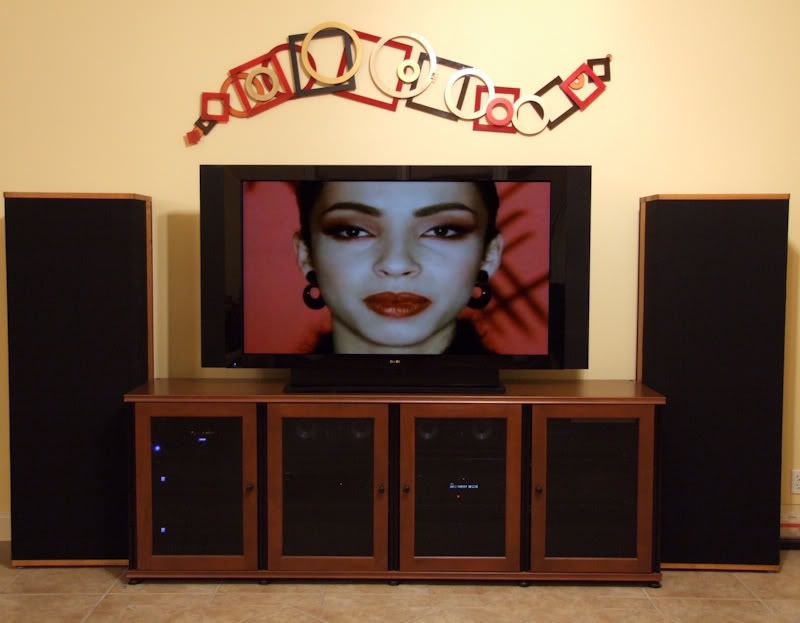
Figure 9. Home theater front stage with Polk SDA SRS front speakers and dual Polk LSi9 center speakers.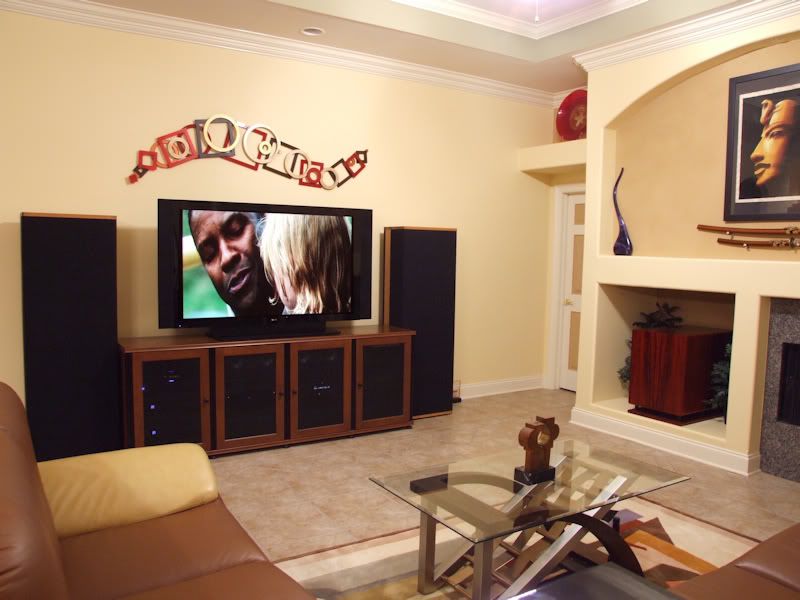
Figure 10. Big red bass beast: SVS PB12 Ultra/2 subwoofer at the right. The sound stage extends out to
the point between the fireplace and the subwoofer.
Figure 11. Rear stage with Polk LSi15 tower speakers used as surround speakers.
References
Tweaking Home Theater Pt. 1: Audio Grade Fuses For Home Theater
Tweaking Home Theater Pt. 2: Plasma Break-in DVD
Tweaking Home Theater Pt. 3: Pioneer Elite BDP-09FD Blu-ray Player Review
Tweaking Home Theater Pt. 4: First Impressions: Pioneer Kuro Plasma TV's
Tweaking Home Theater Pt. 5: Pioneer Elite Kuro PRO-151FD Plasma TV
Tweaking Home Theater Part 6: PS Audio PerfectWave AC-5 Power Cable And Other Stuff
Studies On Residential Power Line Noise - Part 9 - PS Audio P5 AC Regenerator
Studies On Residential Power Line Noise - Part 10 - PS Audio P10 AC RegeneratorProud and loyal citizen of the Digital Domain and Solid State Country! -
You have such a beautiful pad Ray. Let's not forget the beauty of Sade in one of those pics as she is and always will be one of my favorite lady's in music.
Nice write up as always and to be honest I'm surprised you don't have a projector. -
Power Line Fuse Replacements
Prior to installation, the power line fuses of the P5 and P10 were replaced with HiFi Tuning Supreme fuses.Proud and loyal citizen of the Digital Domain and Solid State Country! -
You have such a beautiful pad Ray.
Thank you. I find that it helps out a lot to put guests in a relaxed mood. I enjoy entertaining. Let's not forget the beauty of Sade in one of those pics as she is and always will be one of my favorite lady's in music.
Let's not forget the beauty of Sade in one of those pics as she is and always will be one of my favorite lady's in music.
Even moreso now that her body has filled out quite nicely. When she was younger she was somewhat of a stick figure....to be honest I'm surprised you don't have a projector.
I would if I had a dedicated theater room. A large screen and projector would clash with my decor.Proud and loyal citizen of the Digital Domain and Solid State Country! -
Man, your audio rack is stunning, as it the layout of your place.
P.S. I am available for adoption jk.... "....not everything that can be counted counts, and not everything that counts can be counted." William Bruce Cameron, Informal Sociology: A Casual Introduction to Sociological Thinking (1963)
jk.... "....not everything that can be counted counts, and not everything that counts can be counted." William Bruce Cameron, Informal Sociology: A Casual Introduction to Sociological Thinking (1963) -
I'd like to echo the sentiments here - just a beautiful rack and component arrangement. Great write up as well. It looks like the PS Audio AC regenerators are a worthwhile investment.
- PrazDali Optikon 1Mk2
NAD D3020 V2
Schiit Bifrost 2/64
..the rest are headphone setups. -
Awesome system!Linn AV5140 fronts
Linn AV5120 Center
Linn AV5140 Rears
M&K MX-70 Sub for Music
Odyssey Mono-Blocs
SVS Ultra-13 Gloss Black:D


